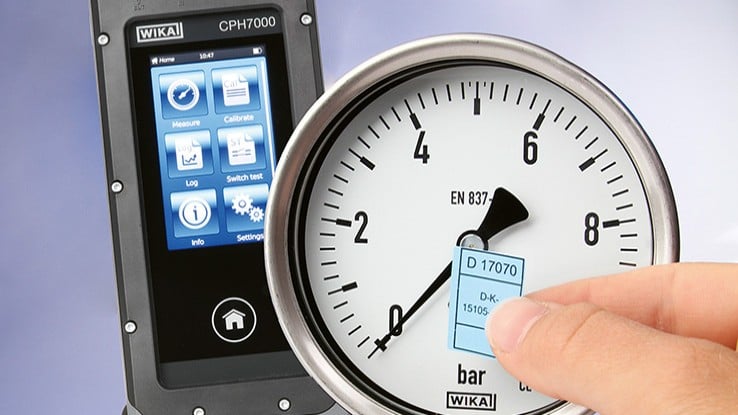What is a compression force transducer?
A compression force transducer, also sometimes just called a force transducer or a load cell, measures the force acting on a sensor. Through elastic deformation, it can often measure tensile as well as compressive forces.
How does a load cell work?
In order to explain the function of a load cell, the design and technology used should be differentiated: load cells with strain gauges, thin-film sensor and hydraulic force measurement. You can learn more about the different measurement principles in Force sensors and force transducers.
How does a compression force transducer with strain gauges work?
Strain gauges are electrical conductors that are attached to a foil strip. Since the strain gauges are firmly attached to the foil, they adjust in line with the compression or elongation of the foil. This results in a resistance change in the electrical conductors, which is a measure of the acting force. The strain gauges are bonded to a spring body or deformation body and are stretched or compressed by a force. The resistance increases when the strain gauges are stretched and decreases when they are compressed. The force acting on the deformation body is then derived from the strength of the deformation. Load cells with strain gauges are particularly flexible due to the different materials and forms and can be mounted on the smallest surfaces. Cross-connections of strain gauges (Wheatstone bridge) optimise signal output and measurement precision.
How does a force transducer with thin-film sensors work?
For load cells with thin-film sensors, the force acting is measured by thin-film resistors. Long-term stability can be guaranteed by the atomic welding of the thin-film sensor to the deformation body. As soon as the body deforms due to the force acting on it, the electrical resistance changes. This resistance change is converted by the sensor into a standardised output signal.
How does a load cell with hydraulic force measurement work?
Hydraulic compression force transducers from WIKA can detect and display the forces occurring in various applications. Load cells with hydraulic force measurement are autonomous systems and do not require any supply voltage. The measuring body of the hydraulic force transducer contains a liquid which can immediately transmit the acting force to an analogue or digital display. We offer fixtures for hydraulic force measuring systems that allow the measuring instrument to be dismounted under pressure and without machine downtime or loss of fluid.


